Ürgüp
Ürgüp
The Beating Heart of Cappadocia
Located in the very core of Cappadocia, the district of Ürgüp is renowned for its stone mansions and rock-carved dwellings. The photo-worthy homes cascading down the slopes of Temenni Hill were once shared by Turkish and Greek families. Today, many have been carefully restored and converted into boutique hotels or restaurants, preserving the town’s architectural legacy.
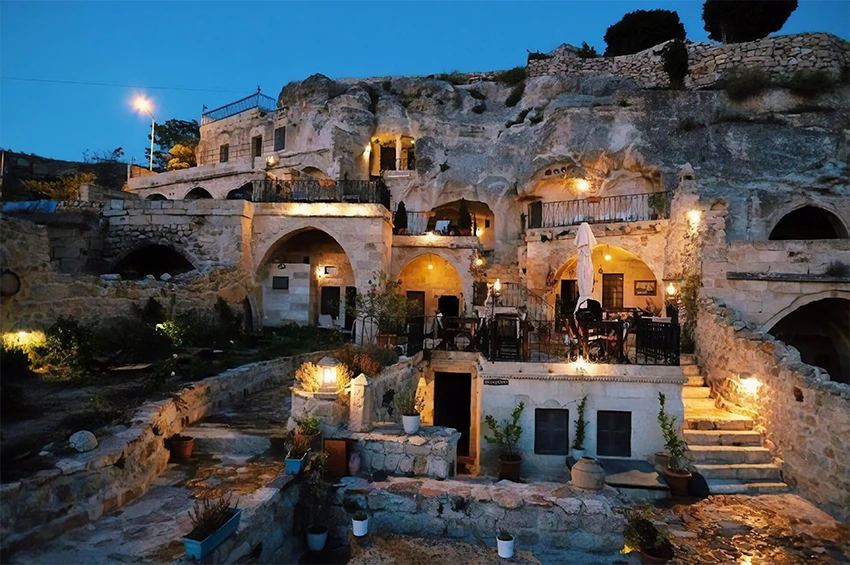
Historical and Cultural Identity
Ürgüp is one of the most historically rooted settlements in Cappadocia and has been shaped by the presence of many civilizations over the centuries. The town’s former names and titles reflect this rich past: during the Byzantine period, it was known as Osiana (Assiana) and later Hagios Prokopios (Prokopi) in honor of Saint Procopius. In the Seljuk era, it was called Başhisar, while during early Ottoman times it was referred to as Burgut Kalesi. It eventually received its current name “Ürgüp” in the early years of the Turkish Republic. These evolving names reflect Ürgüp’s enduring importance through different periods.
Historians trace the earliest signs of settlement in the Ürgüp region back to the Hittites. Several rock-cut tombs and remnants of a church dedicated to St. Procopius remain from the Roman and Byzantine periods. However, the town took on its true character during the Seljuk and Ottoman eras.
The Altıkapı Tomb (Tomb of the Six Arches), dating back to the 13th century, is a rare and well-preserved example of Seljuk architecture. Located in the center of Ürgüp, the structure features six arched windows that still stand today.
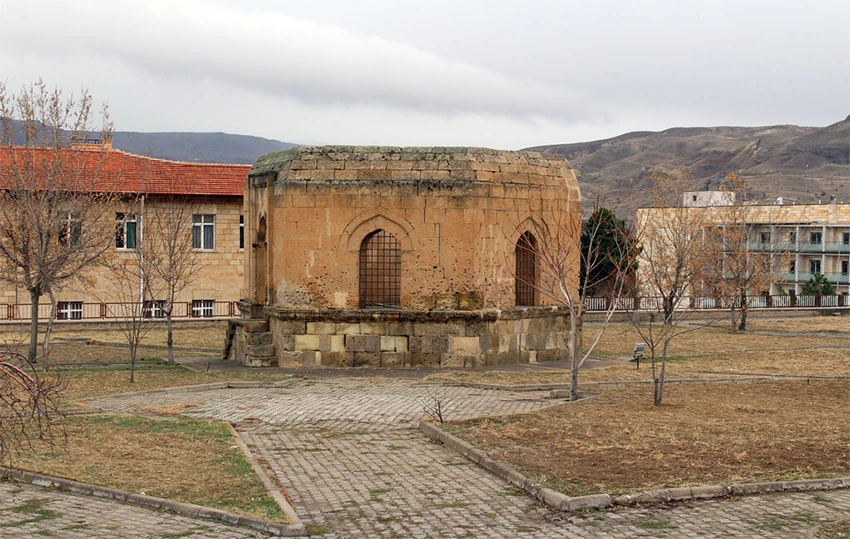
Another significant monument is the Kılıçarslan Gazi Tomb on Temenni Hill, believed to have been built in 1288. It is a symbolic resting place for Rukneddin Kılıçarslan IV, the grandson of Anatolian Seljuk Sultan Kılıçarslan II. These monuments attest to Ürgüp’s role as a key religious and administrative hub during the Seljuk era.
In the late Ottoman period, Ürgüp developed a cosmopolitan character. By the end of the 19th century, it was home to a sizeable Greek Orthodox population, living alongside Turkish residents. Many of the stone mansions built by Greek artisans during this time still define the urban texture of the town. These two-story homes, often adorned with ornate stonework, were left behind following the population exchange of 1923. Some remained vacant, while others continued to be inhabited by local families.
Today, many have been carefully restored and repurposed as boutique hotels, guesthouses, or private museums. As you walk through the streets of Ürgüp, you may still spot faded frescoes or Greek inscriptions on the walls living traces of the town’s multicultural past.
Sights and Scenery in Ürgüp
Ürgüp offers travelers a rich and diverse itinerary with both its town center and surrounding natural and historical attractions. Here are some of the must-see spots and experiences:
Temenni Hill (Wishing Hill)
Rising from the very heart of Ürgüp, this 80-meter-high hill offers panoramic views of the town. A short uphill walk from the bazaar leads you to the summit, where you’ll find the 13th-century tombs known as the Temenni Türbesi (Wishing Tombs). Locals regard the hill as a sacred place for making wishes, often tying cloths to the iron bars around the tombs. From the top, visitors can enjoy a 360-degree view of Ürgüp, with its stone houses glowing under the golden light of sunset and the silhouette of Mount Erciyes on the horizon.
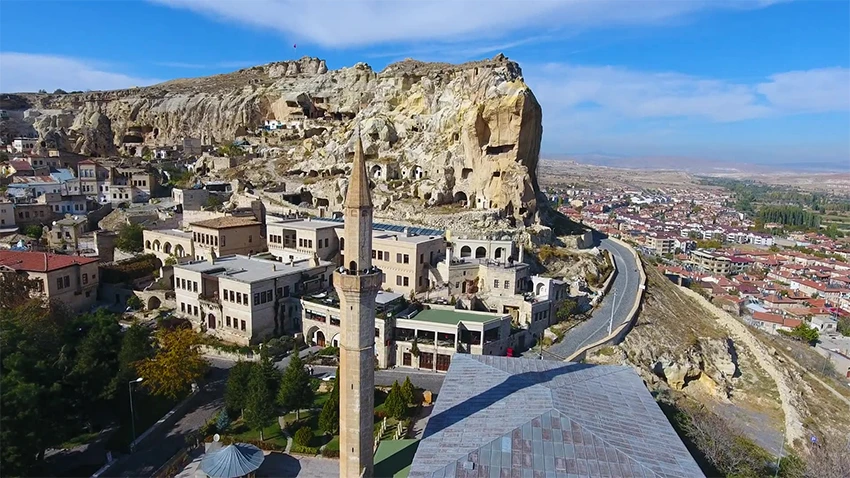
Ürgüp Museum
Perched near the summit of Temenni Hill, this small yet content-rich museum opened its doors in 1971. It features both archaeological and ethnographic collections, including 10-million-year-old mammoth fossils, ancient coins, jewelry, and Ottoman documents. Entry is free, and visiting hours vary by season.
Altıkapı Tomb (Tomb of the Six Arches)
Located near the northern slope of Temenni Hill, this Seljuk-era tomb is distinguished by its six arched windows. Though the interior is generally closed, the carved exterior stands as a remarkable example of medieval Anatolian architecture.
Kadı Castle (Women’s Fortress)
About 500 meters north of Temenni Hill lies Kadı Castle, a natural rock formation used historically as a refuge during wartime. According to legend, a tunnel connected the rock to the Damsa River, providing a hidden escape route. Today it remains a scenic point for panoramic views.

Üzümlü Church and Pancarlık Valley
South of Ürgüp, Pancarlık Valley is home to the 8th–9th century Üzümlü Church, named for the grapevine frescoes inside. This serene route offers a blend of early Christian architecture and natural beauty, ideal for peaceful walking and exploration.
Mustafapaşa (Sinasos) Village
Just 5 kilometers from Ürgüp, Mustafapaşa offers a glimpse into the area’s Greek Orthodox heritage. Visitors can admire 19th-century mansions, historic churches like the Church of Constantine and Helen, and the Cappadocia Art and History Museum home to handcrafted dolls and ethnographic displays. It’s a tranquil spot ideal for a half-day visit.
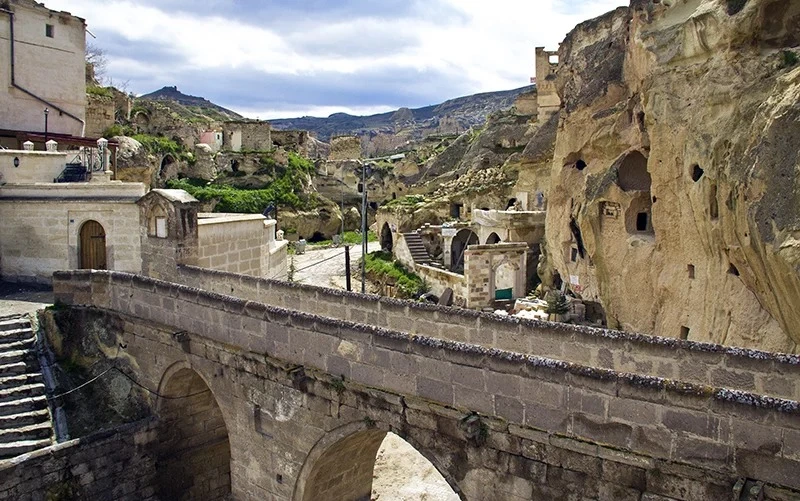
The Three Beauties (Üç Güzeller)
Located just five minutes from Ürgüp’s center, the Three Beauties are Cappadocia’s most photographed fairy chimneys. They symbolize not only the region’s volcanic origins but also a beloved local legend of a princess and her family turned to stone. A must-see natural monument on any visit.
In addition to these highlights, Ürgüp features:
- Historical hammams and Ottoman-era mosques like Taş Mosque (Camii Kebir)
- Scenic hiking in Gomeda Valley and Üzengi Stream
- A lively bazaar offering onyx stone crafts, carpets, ceramics, and local food
- Turkish Night shows at boutique hotels with folk music and dance performances
Practical Tips & Local Insights
Getting There & Accommodation
Ürgüp is located approximately 50 km from Nevşehir Kapadokya Airport and around 70 km from Kayseri Airport. Shuttle services operate regularly from both airports. Accommodation options include cave hotels, historic stone mansions, and modern guesthouses. Booking in advance is especially advised for those seeking unique, traditional stays.

Best Views & Photography Spots
Temenni Hill offers panoramic views and is perfect for both sunrise and sunset photography. Though hot air balloons fly closer to Göreme, they are still visible from Ürgüp in the early morning hours. For a more intimate experience, explore the town’s alleys spot carved wooden doors, aged stonework, and traditional architecture that offers authentic photo opportunities.
Dining & Culinary Experiences
Don’t miss the chance to sample Testi Kebabı meat slow-cooked in a sealed clay pot and çömlek fasulye, a hearty bean stew. Local eateries serve homemade classics like gözleme and mantı. Turasan Wine House offers tasting experiences of Cappadocia’s volcanic-soil-grown grapes perfect for a relaxing evening with live music and regional flavors.
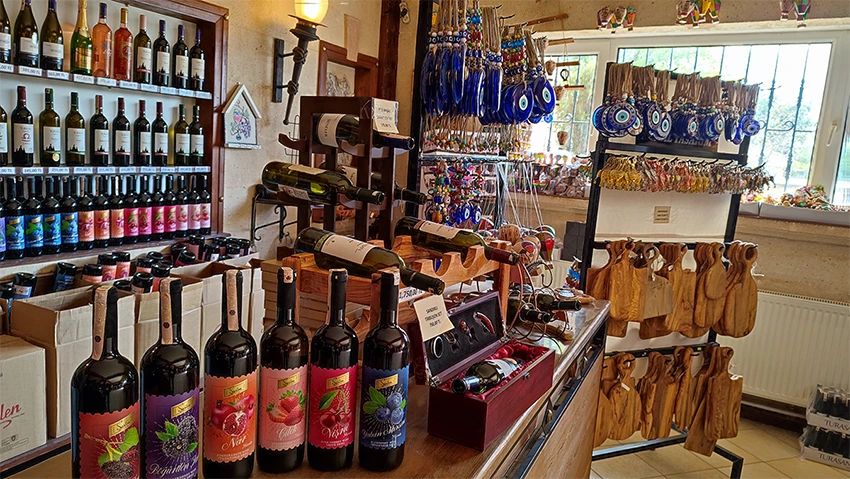
Souvenir Shopping
Pick up local crafts such as onyx stone sculptures, gourd lamps, Avanos ceramics, and woven rugs. On market days, the bazaar comes alive with sun-dried fruits, herbs, and regional delicacies.
Suggested Itinerary for One Day in Ürgüp
- Morning: Breakfast at a local café → Walk up Temenni Hill
- Midday: Visit Ürgüp Museum → Browse the bazaar
- Lunch: Enjoy local dishes at a family-run restaurant
- Afternoon: Explore Mustafapaşa Village and its museum
- Evening: Return to Ürgüp → Watch sunset at The Three Beauties → Attend Turkish Night show or wine tasting
Seasonal Advice & Local Services
Spring and autumn offer the best weather. Summer is hot during the day but cool at night bring a jacket. In winter, snow creates a fairy-tale scene, but be cautious when driving. Town center facilities include ATMs, pharmacies, and banks. If heading into smaller villages, bring cash.
From its vibrant culture and stunning landscapes to practical comforts, Ürgüp promises a rewarding stop on your Cappadocia journey. As you wander among stone mansions and watch the sunset behind The Three Beauties, you’ll truly feel the spirit of this timeless land.
Safe travels!



